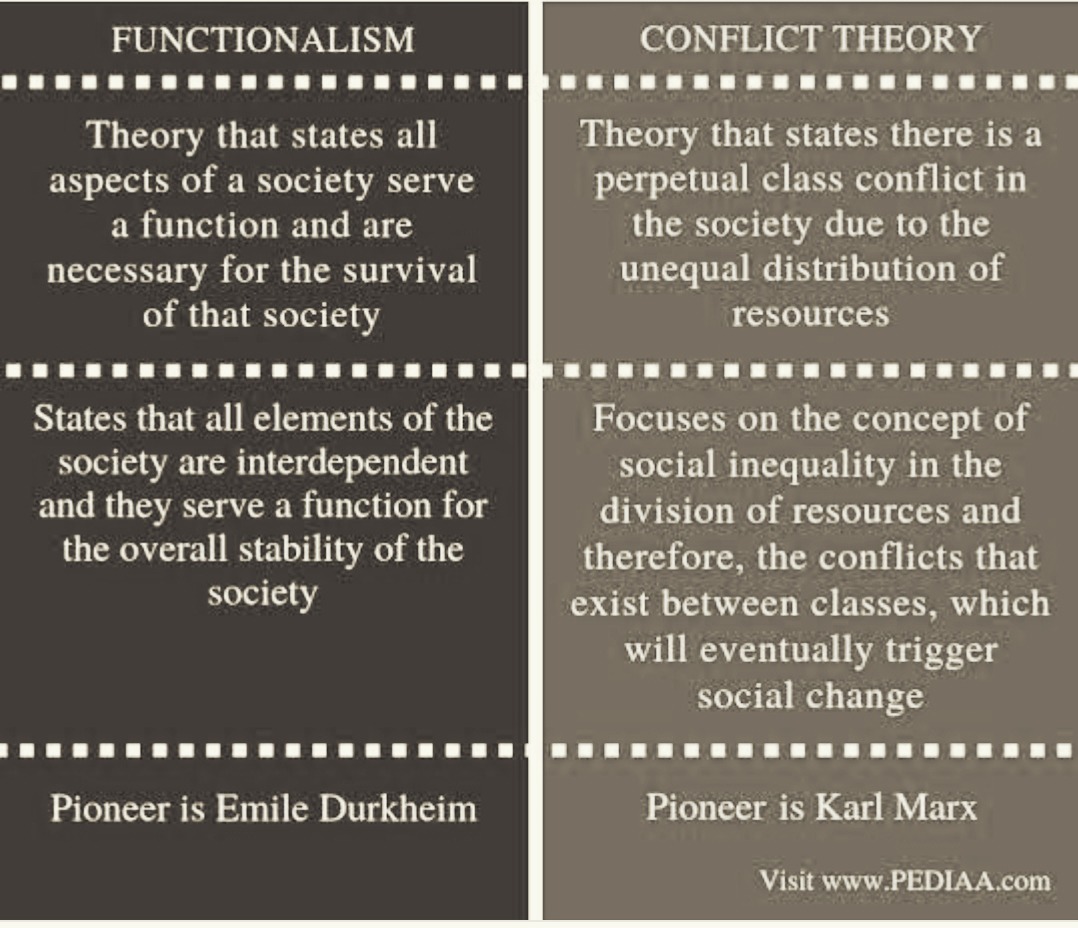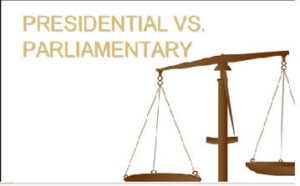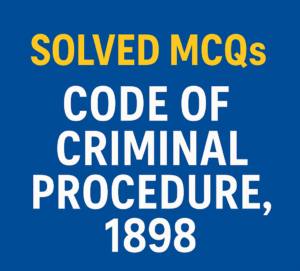Sociological Perspective
One good way to define the sociological perspective is seeing the general in particular. This shows that sociologists look for general patterns in the behavior of particular people.
The sociological perspective is an approach to understanding human behavior by placing it within its broader social context.
The three theoretical orientations of sociological perspective are:
1)- Structural Functionalism,
2)- Symbolic Interaction, and
3)- Conflict Perspective.
What is Structural Functionalism?
Structural Functionalism is a macro theory that looks at how all structures or institutions in society work together. Examples of structures or institutions of society include: education, health care, family, legal system, economy, and religion.
For instance, family is an example of structural functionalism. Each part performs a useful function. For example, the parents in a family provides for the children, who will in turn care for the parents when they become elderly.

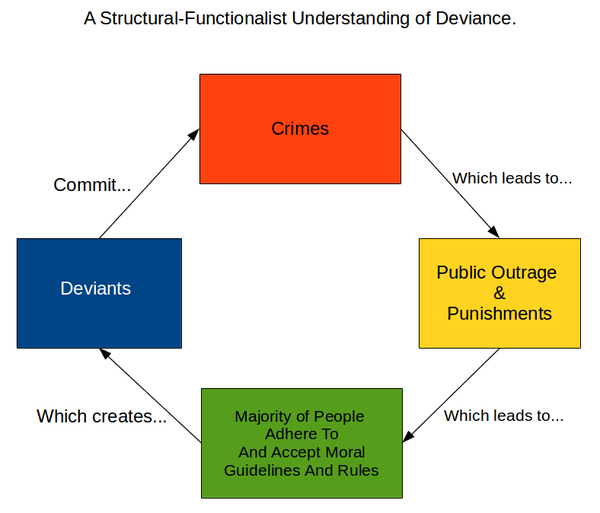
What is symbolic interaction?
Symbolic interactionism is a theoretical approach to understanding the relationship between humans and society. The basic notion of symbolic interactionism is that human action and interaction are understandable only through the exchange of meaningful communication or symbols.
Although, symbolic interactionism traces its origins to Max Weber’s assertion that individuals act according to their interpretation of the meaning of their world, the American philosopher George Herbert Mead introduced this perspective to American sociology in the 1920s.
For example, why would young people smoke cigarettes even when all objective medical evidence points to the dangers of doing so?1 The answer is in the definition of the situation that people create. Studies find that teenagers are well informed about the risks of tobacco, but they also think that smoking is cool, that they will be safe from harm, and that smoking projects a positive image to their peers. So, the symbolic meaning of smoking overrides the facts regarding smoking and risk.
In the case of smoking, a symbolic interaction perspective might miss the powerful role that the institution of mass media plays in shaping perceptions of smoking through advertising, and by portraying smoking in film and television.
Yet another example of symbolic interaction is Credentialism that embodies the emphasis on certificates or degrees to show that a person has a certain skill, has attained a certain level of education, or has met certain job qualifications. These certificates or degrees serve as a symbol of what a person has achieved, allowing the labeling of that individual to be based on a recognized, sequential program of instruction.
Likewise, low standardized test scores or poor performance in a particular class often lead to a student who is labeled as a low achiever. Such labels are difficult to “shake off,” which can create a self-fulfilling prophecy and result in outcomes that could have been prevented otherwise.
Symbolic interactionism can also be applied to the analysis of stigma, a concept of particular interest to health researchers who study obesity. People with a physical deformity (like obesity) are made to feel ashamed and experience a spoiled social identity.
What is Conflict Perspective?
A perspective in the social sciences that emphasizes the social, political or material inequality of a social group.
Conflict Theory, developed by Karl Marx, purports that due to society’s never-ending competition for finite resources, it will always be in a state of conflict.
Karl Marx is regarded as the father of social conflict theory, which is a component of the four major paradigms of sociology.
The conflict within the story generally comes in four basic types: Conflict with the self, Conflict with others, Conflict with the environment and Conflict with the supernatural.
There are four important elements or assumptions that are part of conflict theory: competition, revolution, structural inequality, and war.
For example, conflict theory describes the relationship between employers and employees as one of conflict, in which the employers wish to pay as little as possible for the employees’ labor, while the employees wish to maximize their wages.
Social conflict can result from the habit of making negative assumptions where there is ambiguity. For example, assuming a late friend doesn’t respect your time as opposed to making a positive assumption such as assuming they have run into a problem such as a late train.
When social norms are violated, social conflict may arise. For instance, if it’s a norm to be quiet in the late night hours in a society. A late night party may generate a social conflict between the neighbors.
There’s a general behavior that people demands respect from others. If someone quarrels or disrespect others, this creates social conflict.
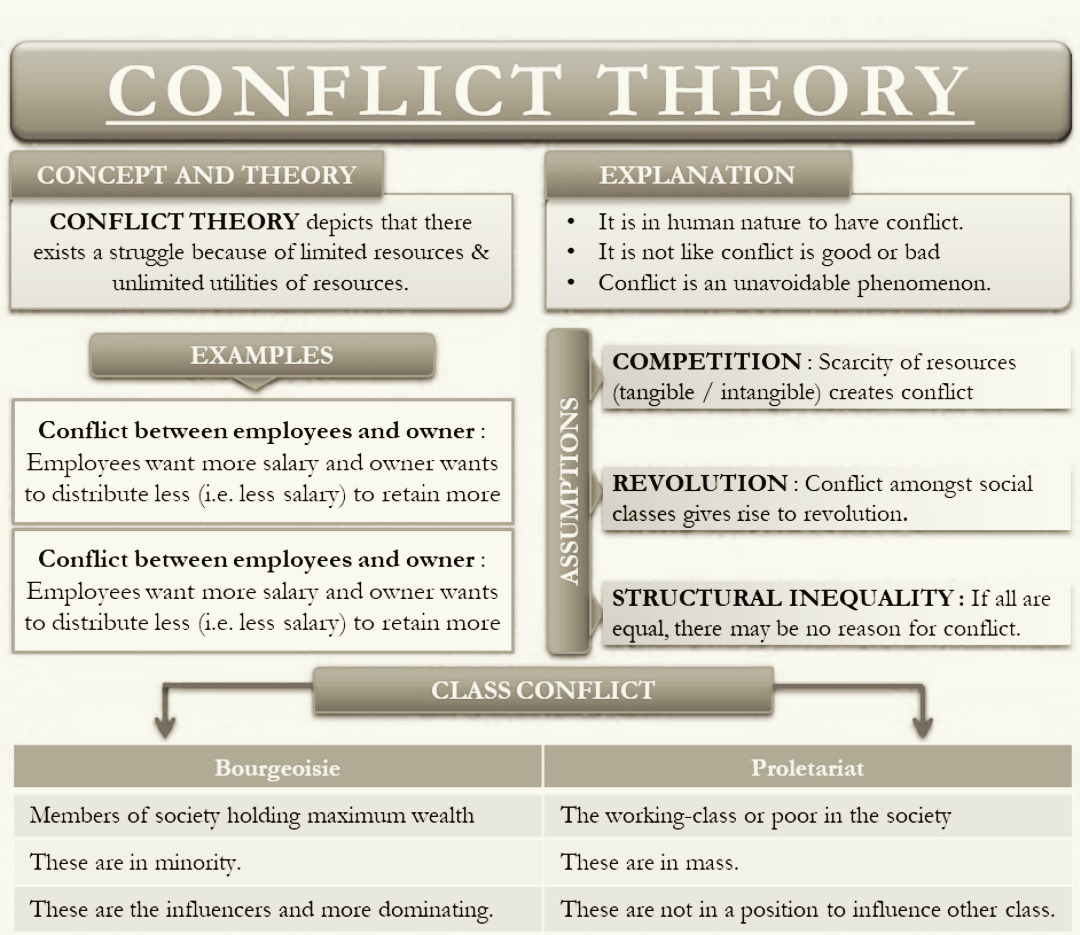
Conflict theory, first developed by Karl Marx, is a theory that society is in a state of perpetual conflict because of competition for limited resources.
Conflict theory holds that social order is maintained by domination and power, rather than by consensus and conformity. According to conflict theory, those with wealth and power try to hold on to it by any means possible, chiefly by suppressing the poor and powerless. A basic premise of conflict theory is that individuals and groups within society will work to try to maximize their own wealth and power.
Salient Features of Conflict Theory
1)- Conflict theory focuses on the competition among groups within society over limited resources.
2)- Conflict theory views social and economic institutions as tools of the struggle among groups or classes, used to maintain inequality and the dominance of the ruling class.
3)- Marxist conflict theory sees society as divided along lines of economic class between the proletarian working class and the bourgeois ruling class.
4)- Later versions of conflict theory look at other dimensions of conflict among capitalist factions and among various social, religious, and other types of groups.
📍 English Language Educator | Blogger & Content Strategist | 7+ Years in Educational Blogging
Nosheen Bashir is a dedicated English teacher and experienced blogger with over seven years of expertise in content creation and educational writing. Passionate about language, literature, and effective communication, she combines her teaching experience with blogging skills to create insightful, research-backed content that helps learners and educators alike.
🔹 Expertise & Achievements:
✔ English Language Education: A skilled educator with years of experience in teaching English grammar, literature, and communication skills to students of varying levels.
✔ Educational Blogging: Running a successful blog for 7+ years, delivering well-structured, engaging content on language learning, writing techniques, and academic success.
✔ SEO & Content Strategy: Specializes in creating high-ranking, authoritative articles that follow Google’s EEAT principles, ensuring content that is both informative and search-friendly.
✔ Student-Centric Approach: Committed to making English easier, engaging, and accessible, helping readers and students improve their language proficiency.
🚀 With a passion for teaching and writing, Nosheen Bashir is dedicated to crafting educational content that empowers students, teachers, and language enthusiasts worldwide.

